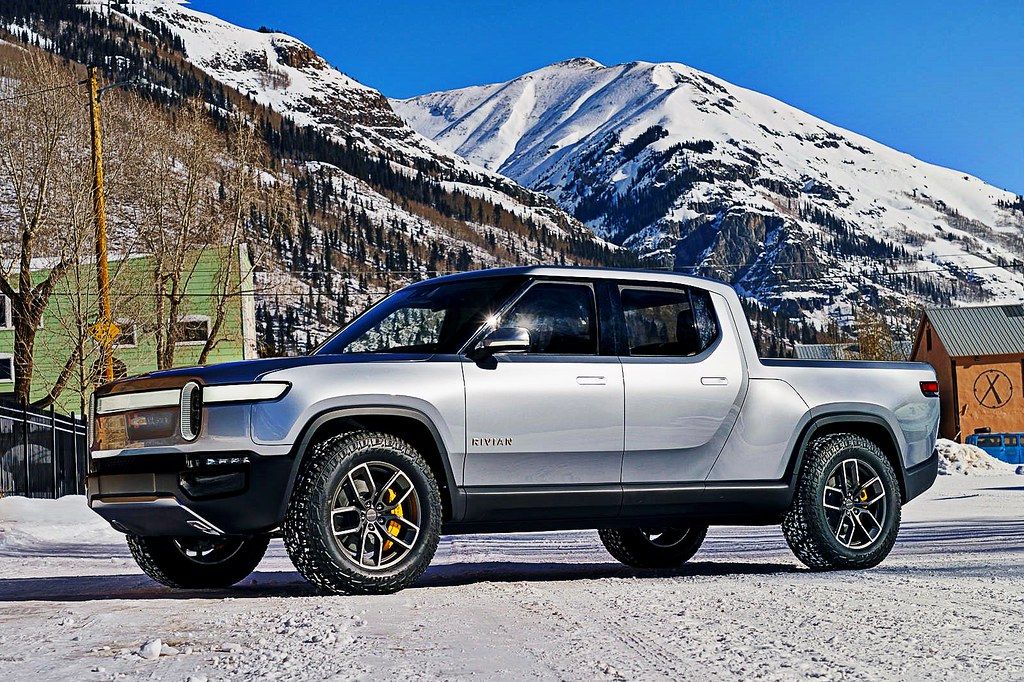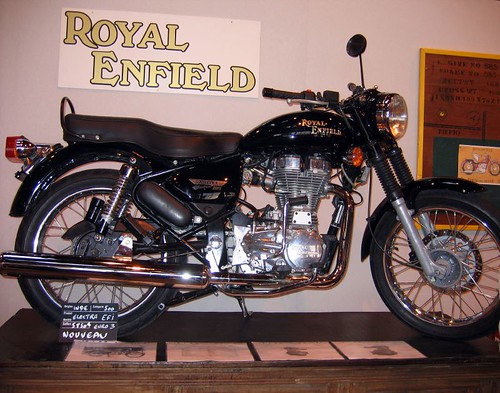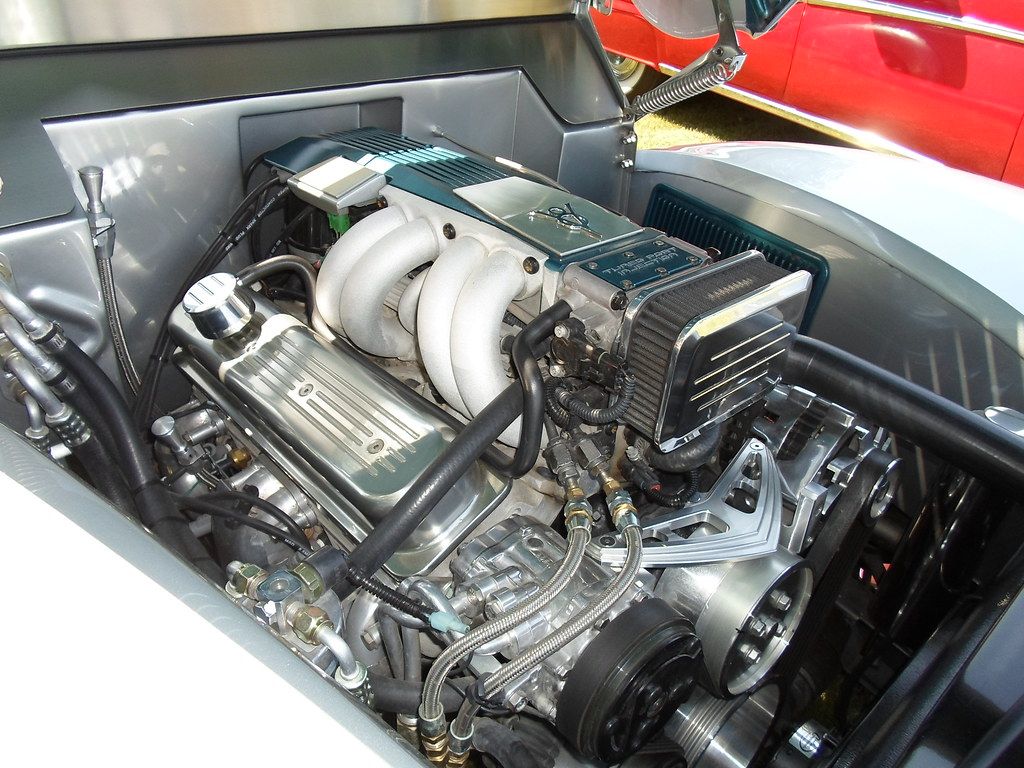
There’s a special magic in the roar of an engine, the sleek curve of a fender, or the timeless silhouette of a truly iconic vehicle. For automotive enthusiasts, few things ignite passion quite like the thought of a beloved classic making a triumphant return. It’s a powerful blend of nostalgia for the golden eras of motoring and an exciting anticipation for how modern engineering could breathe new life into these legends.
From the trailblazers that put the world on wheels to the muscle cars that defined an entire generation, these machines aren’t just modes of transport; they are cultural touchstones. They represent innovation, aspiration, and a distinct character that carved out a permanent place in our collective imagination. Whether it’s a direct reintroduction of a long-lost nameplate or a spiritual revival of a classic’s essence, the desire to see these automotive titans back on the road is a sentiment shared by millions.
Join us on an exhilarating ride as we dive deep into 15 iconic vehicles that have captivated hearts across the decades. We’ll celebrate their groundbreaking designs, performance prowess, and the indelible marks they left on history, all while indulging in the thrilling fantasy of their grand re-entrance into the modern automotive landscape. Prepare to be inspired by the legends that shaped yesterday and could very well inspire the vehicles of tomorrow!
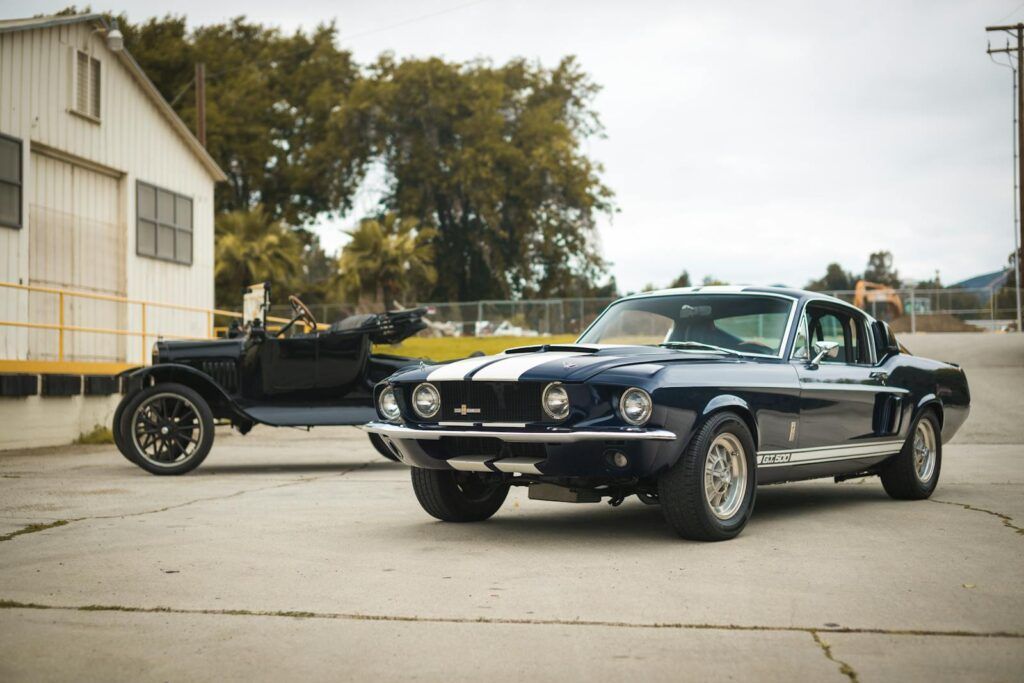
1. **Ford Model T**The Ford Model T, affectionately known as the “Tin Lizzie,” isn’t just a car; it’s the very foundation of modern motoring. Produced by the Ford Motor Company from 1908 to 1928, this marvel revolutionized American travel by becoming the first truly mass-produced automobile available at a price accessible to average American families. Before the Model T, cars were largely luxury items, but Henry Ford’s vision turned personal transportation into a widespread reality.
Ford famously implemented the assembly line system, a groundbreaking innovation that dramatically accelerated production. This wasn’t just about efficiency; it was about democratizing the automobile. By assembling cars quickly and affordably, Ford didn’t just sell vehicles; he transformed society, making it possible for millions more people to experience the freedom of the open road and explore beyond their immediate communities.
One of the Model T’s most ingenious design philosophies was its exceptional ease of driving. Henry Ford understood that many of his potential customers had only ever driven horses. The car was engineered to be simple and intuitive, bridging the gap between equine travel and mechanical locomotion. This user-friendly approach contributed significantly to its widespread adoption and helped usher in a new era of personal mobility.
Its legacy is simply staggering. More than 15 million Model T cars were built, a sales record that stood unchallenged until 1971 when it was finally surpassed by Volkswagen. This incredible feat cemented the Model T’s place not just in automotive history, but in global industrial history. Imagining a modern vehicle that embodies this spirit of accessible, transformative innovation makes us wish for a Model T for a new generation.
Car Model Information: 2025 Audi Q7 55 Premium Plus
Caption: 1925 Ford Model T Touring Car
Manufacturer: Ford Motor Company
Production: October 1908 – May 1927
Assembly: collapsible list
Designer: Childe Harold Wills
Class: Economy car
BodyStyle: collapsible list
Layout: FMR layout
Engine: straight-4
Transmission: planetary gear
Wheelbase: 100.0 in
Abbr: on (1912 roadster)
Length: 134 in
Width: 1676 mm
Height: 1860 mm
Weight: convert
Predecessor: Ford Model N
Successor: Ford Model A (1927–1931)
Categories: 1900s cars, 1908 establishments in the United States, 1910s cars, 1920s cars, All articles needing additional references
Summary: The Ford Model T is an automobile that was produced by the Ford Motor Company from October 1, 1908, to May 26, 1927. It is generally regarded as the first mass-affordable automobile, which made car travel available to middle-class Americans. The relatively low price was partly the result of Ford’s efficient fabrication, including assembly line production instead of individual handcrafting. The savings from mass production allowed the price to decline from $780 in 1910 (equivalent to $26,322 in 2024) to $290 in 1924 ($5,321 in 2024 dollars). It was mainly designed by three engineers, Joseph A. Galamb (the main engineer), Eugene Farkas, and Childe Harold Wills. The Model T was colloquially known as the “Tin Lizzie”.
The Ford Model T was named the most influential car of the 20th century in the 1999 Car of the Century competition, ahead of the BMC Mini, Citroën DS, and Volkswagen Beetle. Ford’s Model T was successful not only because it provided inexpensive transportation on a massive scale, but also because the car signified innovation for the rising middle class and became a powerful symbol of the United States’ age of modernization. With over 15 million sold, it was the most sold car in history before being surpassed by the Volkswagen Beetle in 1972.
Get more information about: Ford Model T
Buying a high-performing used car >>>
Brand: Ford Model: Model T
Price: $55,675 Mileage: 20,490 mi.
Read more about: The Enduring Allure of the AMC Javelin: Unpacking Its Worth, Speed, and Underrated Legacy for Today’s Enthusiasts

2. **Ford Model A**Following the unparalleled success of the Model T, Ford proved its enduring innovation with the introduction of the Ford Model A. Launched in 1927 and produced from 1928 to 1931, the Model A wasn’t just a successor; it was Ford’s bold answer to an evolving automotive landscape, where competitors like General Motors had begun to adopt Ford’s mass production techniques and offer increasingly sophisticated vehicles.
The Model A marked a significant step forward in design and functionality compared to its predecessor. While the Model T had prioritized simplicity and affordability, the Model A showcased a refined aesthetic and improved engineering. Ford understood that to maintain its market dominance, it needed to offer something more advanced, yet still true to its core values of widespread accessibility.
Perhaps one of the most significant advancements the Model A brought was the standardization of controls. It was the first Ford vehicle to utilize the familiar layout we recognize today: clutch, brake, throttle, gear shift, and a steering wheel that offered more precise control. This ergonomic leap forward made driving more intuitive and comfortable, further solidifying the car’s appeal to a growing base of drivers who appreciated both performance and convenience.
With nearly five million Ford Model As produced during its relatively short run, it quickly became the best-selling model of its era. The vehicle was also offered in an impressive variety of styles, catering to diverse tastes and needs. The Model A’s blend of improved design, user-friendly controls, and continued affordability underscored Ford’s ability to evolve and adapt, reminding us that sometimes, the best way to innovate is to build upon an already iconic foundation.
Car Model Information: 2025 Audi Q7 55 Premium Plus
Caption: 1925 Ford Model T Touring Car
Manufacturer: Ford Motor Company
Production: October 1908 – May 1927
Assembly: collapsible list
Designer: Childe Harold Wills
Class: Economy car
BodyStyle: collapsible list
Layout: FMR layout
Engine: straight-4
Transmission: planetary gear
Wheelbase: 100.0 in
Abbr: on (1912 roadster)
Length: 134 in
Width: 1676 mm
Height: 1860 mm
Weight: convert
Predecessor: Ford Model N
Successor: Ford Model A (1927–1931)
Categories: 1900s cars, 1908 establishments in the United States, 1910s cars, 1920s cars, All articles needing additional references
Summary: The Ford Model T is an automobile that was produced by the Ford Motor Company from October 1, 1908, to May 26, 1927. It is generally regarded as the first mass-affordable automobile, which made car travel available to middle-class Americans. The relatively low price was partly the result of Ford’s efficient fabrication, including assembly line production instead of individual handcrafting. The savings from mass production allowed the price to decline from $780 in 1910 (equivalent to $26,322 in 2024) to $290 in 1924 ($5,321 in 2024 dollars). It was mainly designed by three engineers, Joseph A. Galamb (the main engineer), Eugene Farkas, and Childe Harold Wills. The Model T was colloquially known as the “Tin Lizzie”.
The Ford Model T was named the most influential car of the 20th century in the 1999 Car of the Century competition, ahead of the BMC Mini, Citroën DS, and Volkswagen Beetle. Ford’s Model T was successful not only because it provided inexpensive transportation on a massive scale, but also because the car signified innovation for the rising middle class and became a powerful symbol of the United States’ age of modernization. With over 15 million sold, it was the most sold car in history before being surpassed by the Volkswagen Beetle in 1972.
Get more information about: Ford Model T
Buying a high-performing used car >>>
Brand: Ford Model: Model A
Price: $55,675 Mileage: 20,490 mi.
Read more about: The Enduring Allure of the AMC Javelin: Unpacking Its Worth, Speed, and Underrated Legacy for Today’s Enthusiasts
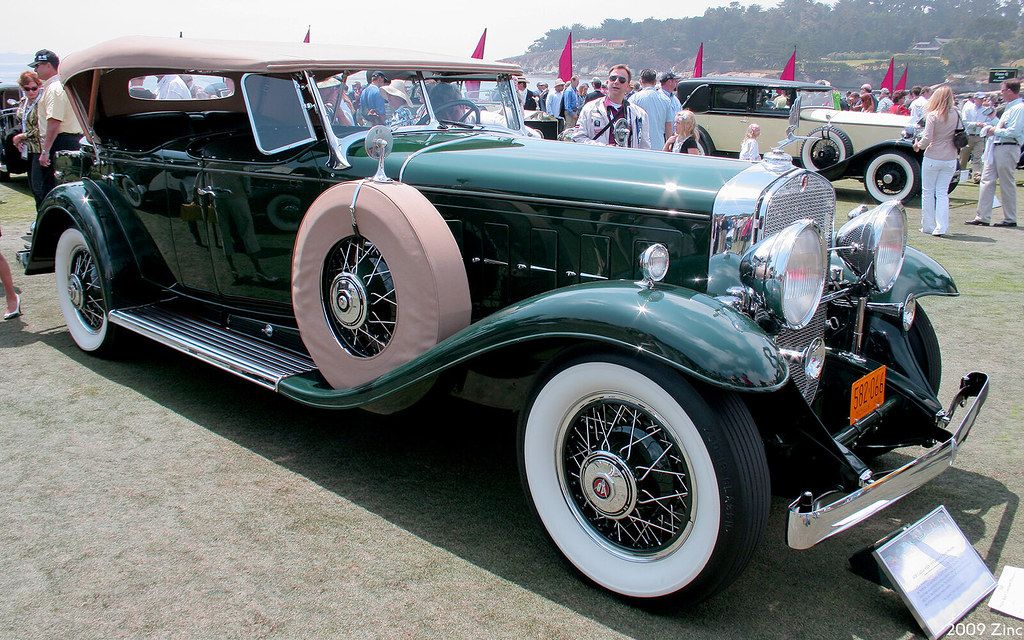
3. **Cadillac V-16**Even amidst the gloom of the Great Depression, an era when lavish lifestyles and luxuries were largely put on the back burner, car manufacturers continued to push the boundaries of innovation. The 1930s saw cars evolve dramatically, introducing advancements like radios, heaters, automatic transmissions, and, crucially, more powerful engines. Vehicles began to shed their earlier buggy styles, adopting a sleeker, more sophisticated aesthetic.
At the pinnacle of this automotive evolution stood the Cadillac V-16, a true testament to engineering excellence and opulent design. Many V-16s were built early in 1930, just before the full economic impact of the Great Depression set in. This luxury vehicle was not merely powerful; it was a statement, a rolling piece of art that showcased what was possible when engineering ambition met an uncompromising pursuit of refinement.
The Cadillac V-16 was developed as a powerful multi-cylinder car, boasting an engine that was both smooth and immensely capable. Its introduction generated exceptional attention from both the public and the press, who marvelled at its sophisticated mechanics and its bespoke craftsmanship. Each of the just over 4,000 Cadillac V-16s produced was finished custom to order, ensuring that every owner received a truly unique and personalized masterpiece.
Today, these magnificent machines are revered by collectors and enthusiasts alike, considered to be among the finest prewar vehicles ever created. Their rarity, coupled with their groundbreaking engineering and undeniable elegance, means that Cadillac V-16s can command prices exceeding $500,000. Reintroducing a vehicle with such a commitment to bespoke luxury and groundbreaking power would be a dream for many, a nod to an era when cars were crafted with limitless passion.
Car Model Information: 2017 Cadillac Escalade Platinum
Caption: 1931 Cadillac V-16 Sport Phaeton convertible
Name: Cadillac V-16
Engine: Cadillac V16 engine
Manufacturer: Cadillac
Production: 1930–1940
Platform: GM D platform
Assembly: Detroit Assembly
Class: Ultra-luxury car
Layout: FR layout
BodyStyle: convertible (car)
Transmission: synchromesh,manual transmission
Designer: Harley Earl
Categories: Articles with short description, Cadillac vehicles, Cars discontinued in 1940, Cars introduced in 1930, Motor vehicles manufactured in the United States
Summary: The Cadillac V-16 (also known as the Cadillac Sixteen) was Cadillac’s top-of-the-line model from its January 1930 launch until 1940. The V16 powered car was a first in the United States, both extremely expensive and exclusive, with every chassis being custom-finished to order. Only 4,076 were constructed in its 11-year run, with the majority built in its debut year before the Great Depression took strong hold. The onset of World War II reduced the sales, resulting in its demise.
Get more information about: Cadillac V-16
Buying a high-performing used car >>>
Brand: Cadillac Model: V-16
Price: $33,961 Mileage: 89,938 mi.
Read more about: 15 Vehicles Millennials Are Steering Clear Of: Unpacking the Generational Divide in Automotive Appreciation
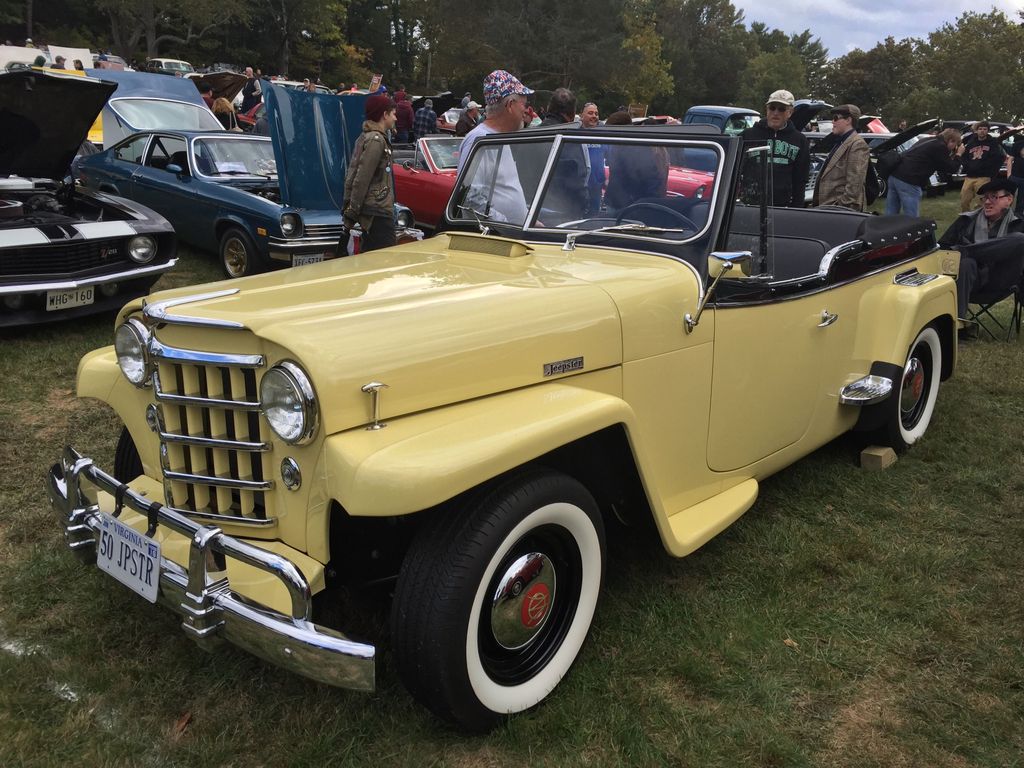
4. **Willys Jeeps**The rugged, go-anywhere spirit of the Willys Jeep is indelibly linked to its origins on the battlefields of World War II. Originally manufactured during the conflict, the Willys jeep model was famously adopted by the U.S. War Department for its critical role in transporting soldiers across challenging terrains. It became an indispensable workhorse, embodying durability and adaptability under the harshest conditions.
Recognizing the immense potential of this robust design beyond military applications, Willys introduced the CJ (Civilian Jeep) in 1944. This marked a pivotal moment, as it created the first mass-produced 4×4 vehicles specifically engineered for civilian use. The CJ brought unparalleled off-road capability and utilitarian versatility to the general public, forever changing how people approached outdoor adventures and demanding tasks.
The Willys CJ series enjoyed a remarkably long and successful production run, remaining largely unchanged until 1986, when it was eventually replaced by the equally iconic Jeep Wrangler. This longevity speaks volumes about its fundamental soundness and enduring appeal. Its simple, functional design proved to be incredibly effective and adaptable, forming the blueprint for generations of off-road vehicles.
In a testament to its profound impact, the Willys-Overland Jeep was deservedly named an International Historic Mechanical Engineering Landmark by the American Society of Mechanical Engineers in 1991. The enduring reverence for this classic was further highlighted by the production of commemorative Willys Special Edition Jeep Wranglers in 2004 and 2005. A modern reintroduction that truly captures the original Willys’ unpretentious functionality and unbreakable spirit would be a huge hit with enthusiasts.
Car Model Information: 2024 Jeep Wrangler 4xe Jeep Beach
Name: Willys MB , Ford GPW , Truck, 1⁄4nbhton, 4×4, command reconnaissance
Origin: United States
Type: 1/4 ton 4×4 utility truck
IsVehicle: true
Service: 1941–2000
UsedBy: allies of World War II
Wars: World War II,Korean War,List of wars: 1945–1989
Designer: Harold Crist
DesignDate: 1940 through early 1942
Manufacturer: Willys,Ford Motor Company
ProductionDate: 1941–1945
Number: WWII total: More than 647,925 *,,including early production units,Willys MB: Over 359,489 *,Ford GPW: Over 277,896 *,Auburn Automobile#Corporate history
Variants: Ford GPA
SpecLabel: MB and GPW same
Weight: convert
Length: 132 in
Abbr: refn
Width: 62 in
Height: 52 in
Crew: 3 to 4
PrimaryArmament: Designed to mount .30 or .50 caliber machine guns swiveling on a post between front seatbacks
Engine: 134 cuin
EnginePower: 60 hp
PwRatio: 49 hp
Transmission: 3-speed × 2-range transfer case
Suspension: Beam axle#Live axle vs Dead axle
Clearance: convert
PayloadCapacity: 1200 lb
FuelCapacity: 15 USgal
VehicleRange: 300 mi
Speed: 65 mph
Categories: All articles needing additional references, All articles with failed verification, All articles with unsourced statements, Articles needing additional references from September 2021, Articles with failed verification from September 2021
Summary: The Willys MB ( Willis) and the Ford GPW, both formally called the U.S. Army truck, 1⁄4‑ton, 4×4, command reconnaissance, commonly known as the Willys Jeep, Jeep, or jeep, and sometimes referred to by its Standard Army vehicle supply number G-503, were highly successful American off-road capable, light military utility vehicles. Well over 600,000 were built to a single standardized design, for the United States and the Allied forces in World War II, from 1941 until 1945. This also made it (by its light weight) the world’s first mass-produced four-wheel-drive car, built in six-figure numbers.
The 1⁄4-ton jeep became the primary light, wheeled, multi-role vehicle of the United States military and its allies. With some 640,000 units built, the 1⁄4‑ton jeeps constituted a quarter of the total military support motor vehicles that the U.S. produced during the war, and almost two-thirds of the 988,000 light 4WD vehicles produced, when counted together with the Dodge WC series. Large numbers of jeeps were provided to U.S. allies, including the Soviet Union at the time. Aside from large amounts of 11⁄2- and 21⁄2‑ton trucks, and 25,000 3⁄4‑ton Dodges, some 50,000 1⁄4‑ton jeeps were shipped to help Russia during WWII, against Nazi Germany’s total production of just over 50,000 Kübelwagens, the jeep’s primary counterpart.
Historian Charles K. Hyde wrote: “In many respects, the jeep became the iconic vehicle of World War II, with an almost mythological reputation of toughness, durability, and versatility.” It became the workhorse of the American military, replacing horses, other draft animals, and motorcycles in every role, from messaging and cavalry units to supply trains. In addition, improvised field modifications made the jeep capable of just about any other function soldiers could think of. Military jeeps were adopted by countries all over the world, so much so that they became the most widely used and recognizable military vehicle in history.
Dwight D. Eisenhower, the Supreme Commander of the Allied Expeditionary Force in Europe in World War II, wrote in his memoirs that most senior officers regarded it as one of the five pieces of equipment most vital to success in Africa and Europe. General George Marshall, Chief of Staff of the US Army during the war, called the vehicle “America’s greatest contribution to modern warfare.” In 1991, the MB Jeep was designated an “International Historic Mechanical Engineering Landmark” by the American Society of Mechanical Engineers.
After WWII, the original jeep continued to serve, in the Korean War and other conflicts, until it was updated in the form of the M38 Willys MC and M38A1 Willys MD (in 1949 and 1952 respectively), and received a complete redesign by Ford in the form of the 1960-introduced M151 jeep. Its influence, however, was much greater than that—manufacturers worldwide began building jeeps and similar designs, either under license or not—at first primarily for military purposes, but later also for the civilian market. Willys turned the MB into the civilian Jeep CJ-2A in 1945, making the world’s first mass-produced civilian four-wheel drive. The “Jeep” name was trademarked and grew into a successful and highly valued brand.
The success of the jeep inspired both an entire category of recreational 4WDs and SUVs, making “four-wheel drive” a household term, and numerous incarnations of military light utility vehicles. In 2010, the American Enterprise Institute called the jeep “one of the most influential designs in automotive history.” Its “sardine tin on wheels” silhouette and slotted grille made it instantly recognizable, and it has evolved into the currently produced Jeep Wrangler still largely resembling the original jeep design.
Get more information about: Willys MB
Buying a high-performing used car >>>
Brand: Willys Model: Jeep
Price: $38,990 Mileage: 23,291 mi.
Read more about: The Raw Truth: 10 Cars That Aced & Failed Crash Tests — Where Engineering Triumph Meets Genuine Disappointment
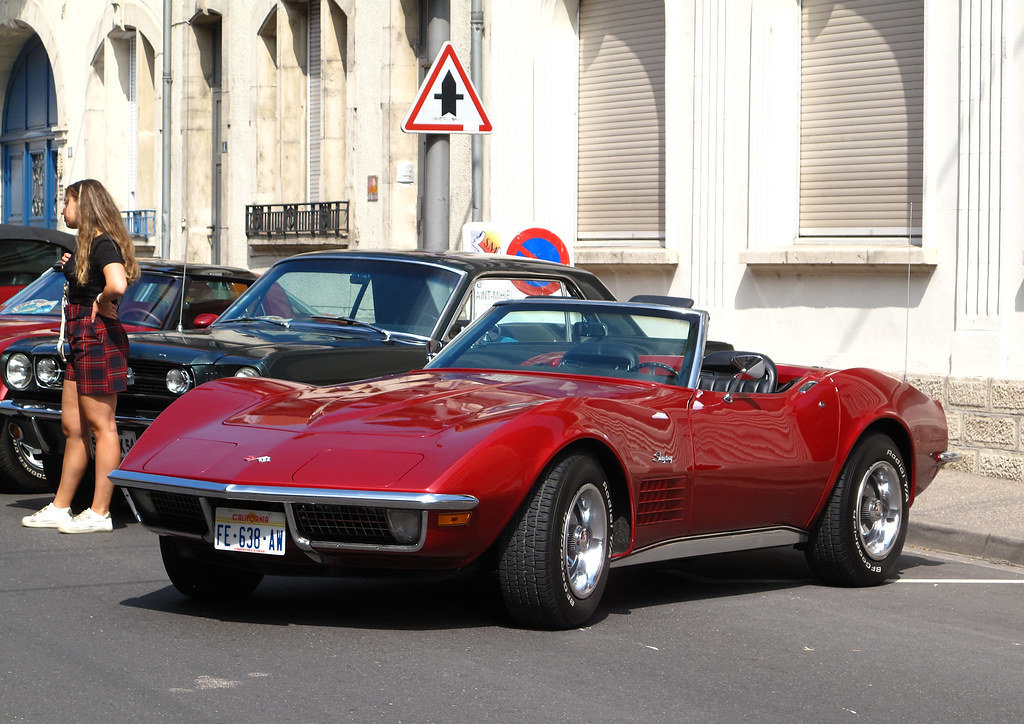
5. **Chevrolet Corvette**In the early 1950s, a burgeoning desire for sports cars swept across America. However, there was a glaring void: no American car manufacturers were producing them. This all changed with a bang when Chevrolet boldly introduced the Corvette in 1953, forever altering the landscape of domestic automotive performance and instantly giving America its own answer to the European roadsters.
While the earliest Corvette models faced challenges, initially being somewhat slow and reportedly unreliable, Chevrolet’s commitment to the vision quickly paid off. By 1955, significant enhancements in performance transformed the Corvette into a true contender. It rapidly shed its early criticisms and soared to prominence, quickly earning its enduring title as “America’s Sports Car.”
The Corvette’s story is one of continuous evolution and sustained excellence. Today, it remains proudly in production, now in its seventh generation, a testament to its timeless appeal and Chevrolet’s dedication to its legacy. Over the decades, Corvettes have accumulated numerous prestigious awards, cementing their status as a benchmark for American performance and design.
Beyond the racetrack and showroom, the Corvette has become a cultural icon, notably driven by NASA astronauts, further associating it with pioneering spirit and high achievement. Its formidable presence in racing worldwide and its impressive record as the pace car for the Indianapolis 500 an astounding 13 times underscore its enduring performance credentials. The constant reinvention of the Corvette, while holding true to its core identity, is a continuous reintroduction of American performance.
Car Model Information: 2019 Chevrolet Corvette Stingray
Name: Chevrolet Corvette
Caption: 2021 Chevrolet Corvette C8
Manufacturer: Chevrolet
Production: 1953–present
ModelYears: bulleted list
Assembly: bulleted list
Class: Sports car
BodyStyle: coupé
Layout: Front-engine, rear-wheel-drive layout,Rear mid-engine, rear-wheel-drive layout
Categories: 1950s cars, 1960s cars, 1970s cars, 1980s cars, 1990s cars
Summary: The Chevrolet Corvette is a line of American two-door, two-seater sports cars manufactured and marketed by General Motors under the Chevrolet marque since 1953. Throughout eight generations, indicated sequentially as C1 to C8, the Corvette is noted for its performance, distinctive styling, lightweight fiberglass or composite bodywork, and competitive pricing. The Corvette has had domestic mass-produced two-seater competitors fielded by American Motors, Ford, and Chrysler; it is the only one continuously produced by a United States auto manufacturer. It serves as Chevrolet’s halo car.
In 1953, GM executives accepted a suggestion by Myron Scott, then the assistant director of the Public Relations department, to name the company’s new sports car after the corvette, a small, maneuverable warship. Initially, a relatively modest, lightweight 6‑cylinder convertible, subsequent introductions of V8 engines, competitive chassis innovations, and rear mid-engined layout have gradually moved the Corvette upmarket into the supercar class. In 1963, the second generation was introduced in coupe and convertible styles. The first three Corvette generations (1953–1982) employed body-on-frame construction, and since the C4 generation, introduced in 1983 as an early 1984 model, Corvettes have used GM’s unibody Y‑body platform. All Corvettes used front mid-engine configuration for seven generations, through 2019, and transitioned to a rear mid-engined layout with the C8 generation.
Initially manufactured in Flint, Michigan, and St. Louis, Missouri, the Corvette has been produced in Bowling Green, Kentucky, since 1981, which is also the location of the National Corvette Museum. The Corvette has become widely known as “America’s Sports Car.” Automotive News wrote that after being featured in the early 1960s television show Route 66, “the Corvette became synonymous with freedom and adventure,” ultimately becoming both “the most successful concept car in history and the most popular sports car in history.”
Get more information about: Chevrolet Corvette
Buying a high-performing used car >>>
Brand: Chevrolet Model: Corvette
Price: $47,990 Mileage: 20,872 mi.
Read more about: The Enduring Allure of the AMC Javelin: Unpacking Its Worth, Speed, and Underrated Legacy for Today’s Enthusiasts
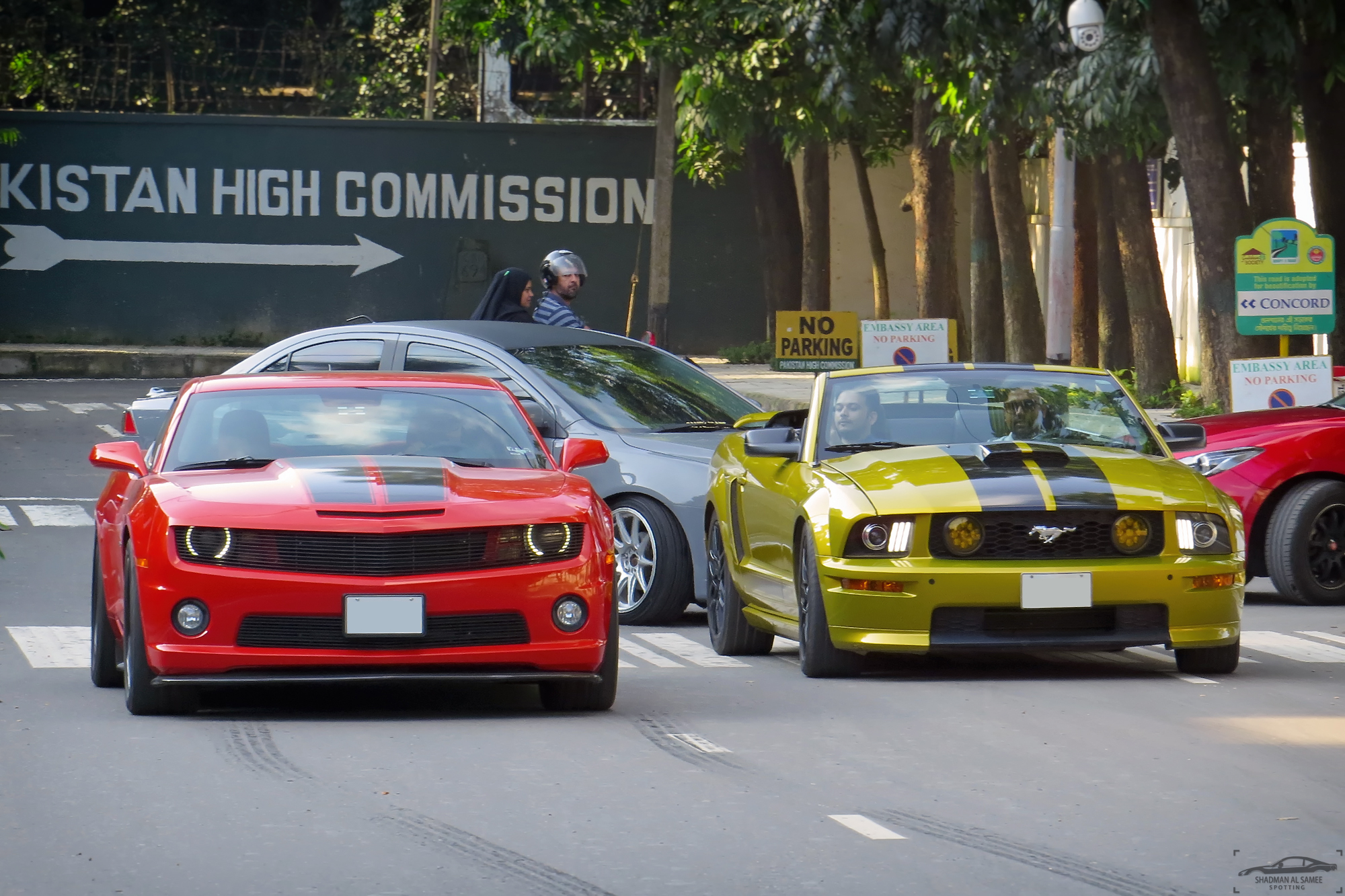
6. **Ford Mustang**The Ford Mustang burst onto the scene in 1964 and immediately ignited a passionate rivalry with Chevrolet’s Corvette, a spirited competition that continues to span generations. Since its electrifying introduction, both the Mustang and the Corvette have enjoyed a timeless appeal, each defining a distinct facet of American sports car culture. The Mustang wasn’t just a car; it was a phenomenon, capturing the zeitgeist of a generation.
Its launch was nothing short of historic. In its first incredible 36 months, Ford sold an astonishing 1.7 million Mustangs, making it the most successful model launch for Ford since the venerable Model A. This unprecedented success wasn’t just about selling cars; it created an entirely new market segment, defining what would become known as the “pony car” class of American automobiles.
The Mustang’s immediate popularity spurred a wave of competitors eager to capture a piece of this exciting new market. Iconic rivals such as the Chevy Camaro, Pontiac Firebird, and Dodge Challenger all followed in its tire tracks, proving the Mustang’s profound influence on automotive design and marketing. It wasn’t just a car; it was a category creator.
Now in its sixth generation, the Ford Mustang remains beloved and an ever-present staple in popular culture and film. From Steve McQueen’s legendary Mustang in “Bullitt” to a 1971 Mustang Fastback in the original “Gone in Sixty Seconds,” and even its own song, “Mustang Sally,” its image is synonymous with American cool. Like the Corvette, the Mustang has a rich history in racing worldwide and has won numerous accolades, with a National Mustang Museum even currently under development in North Carolina. Its continuous evolution keeps its spirit of performance and freedom alive, constantly reintroducing its legend to new audiences.
Car Model Information: 2016 Ford Mustang GT
Name: Ford Mustang
Caption: 2018 Ford Mustang GT 5.0
Aka: Ford T5 (Germany)
Manufacturer: Ford Motor Company
Production: March 1964 – present
ModelYears: 1965–present
Class: Unbulleted list
BodyStyle: Unbulleted list
Layout: Front-engine, rear-wheel-drive layout
Categories: 1970s cars, 1980s cars, 1990s cars, 2+2 coupés, 2000s cars
Summary: The Ford Mustang is an American automobile manufactured and marketed by Ford since 1964, as Ford’s longest nameplate in continuous production. Currently in its seventh generation, it is the fifth-best selling Ford car nameplate. The namesake of the “pony car” automobile segment, the Mustang was developed as a highly styled line of sporty coupes and convertibles derived from existing model lines, initially distinguished by its pronounced “long hood, short deck” proportions.
Originally predicted to sell 100,000 vehicles yearly, the 1965 Mustang became the most successful vehicle launch since the 1927 Model A. Introduced on April 17, 1964 (16 days after the Plymouth Barracuda), over 400,000 units were sold in its first year; the one-millionth Mustang was sold within two years of its launch. In August 2018, Ford produced the 10-millionth Mustang; matching the first 1965 Mustang, the vehicle was a 2019 Wimbledon White convertible with a V8 engine.
The success of the Mustang launch led to multiple competitors from other American manufacturers, including the Chevrolet Camaro and Pontiac Firebird (1967), AMC Javelin (1968), and Dodge Challenger (1970). It also competed with the Plymouth Barracuda, which was launched around the same time. The Mustang also had an effect on designs of coupes worldwide, leading to the marketing of the Toyota Celica and Ford Capri in the United States (the latter, by Lincoln-Mercury). The Mercury Cougar was launched in 1967 as a unique-bodied higher-trim alternative to the Mustang; during the 1970s, it included more features and was marketed as a personal luxury car.
From 1965 until 2004, the Mustang shared chassis commonality with other Ford model lines, staying rear-wheel-drive throughout its production. From 1965 to 1973, the Mustang was derived from the 1960 Ford Falcon compact. From 1974 until 1978, the Mustang (denoted Mustang II) was a longer-wheelbase version of the Ford Pinto. From 1979 until 2004, the Mustang shared its Fox platform chassis with 14 other Ford vehicles (becoming the final one to use the Fox architecture). Since 2005, the Mustang has used the D2C platform, unique to the Mustang.
Through its production, multiple nameplates have been associated with the Ford Mustang series, including GT, Mach 1, Boss 302/429, Cobra (separate from Shelby Cobra), and Bullitt, along with “5.0” fender badging (denoting 4.9 L OHV or 5.0 L DOHC V8 engines).
Get more information about: Ford Mustang
Buying a high-performing used car >>>
Brand: Ford Model: Mustang
Price: $29,261 Mileage: 24,710 mi.
Read more about: The Enduring Allure of the AMC Javelin: Unpacking Its Worth, Speed, and Underrated Legacy for Today’s Enthusiasts
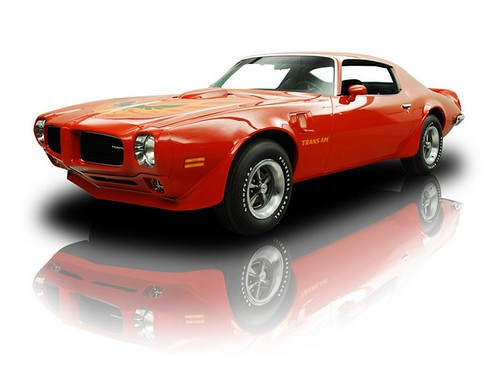
7. **Pontiac Firebird**When you think of the 1970s, it’s hard not to conjure images of the Pontiac Firebird Trans Am, especially when complete with its iconic firebird painted majestically on the hood. Though the Firebird initially made its debut in 1967, this pony car truly found its definitive stride and cemented its legend in the 70s, particularly with the arrival of its second generation in 1970.
This new generation of the Firebird brought with it a more aggressive, muscular look and, crucially, increased performance at a time when many other sports cars were struggling under tightening government regulations. While competitors grappled with restrictions that often dulled their edge, the Firebird managed to enhance its power and presence, standing out as a beacon of performance during a challenging decade for automotive enthusiasts.
Its resilience was remarkable; by 1975, many of its rivals, including the Camaro Z28, AMC Javelin, Plymouth Barracuda, and Dodge Challenger, had all been discontinued. Yet, the Firebird proudly remained, a testament to its enduring appeal and robust engineering. The Firebird also carved out a significant legacy in racing, particularly in the Trans-Am series during the 60s and 70s, showcasing its track prowess.
Beyond the track, the Firebird became one of the most beloved vehicles in American television and film, practically achieving character status. Its memorable appearances include the iconic black Trans Am in “Smokey and the Bandit,” the talking K.I.T.T. in “Knight Rider,” and its role in “Rockford Files.” Production of the Firebird ended in 2003, and all Pontiac vehicles ceased production in 2010, making it a prime candidate for a truly deserved reintroduction. Oh, how we wish for that firebird to fly again!
As we shift gears from the foundational legends and muscle-bound titans of automotive history, our journey accelerates into a more recent past, where innovation continued to redefine what a vehicle could be. This next segment of our expedition, aptly titled ‘The Revival Revolution,’ delves into eight more iconic machines – some igniting fervent desires for their comeback, others already making a bold return to the modern road. It’s a thrilling exploration of how technological advancements, shifting consumer priorities, and a deep well of automotive nostalgia converge to present both incredible opportunities and considerable challenges in breathing new life into cherished nameplates.
Car Model Information: 1985 Pontiac Firebird
Name: Pontiac Firebird
Caption: The second, third, and fourth generations of,the Pontiac Firebird Trans Am
Manufacturer: Pontiac (automobile)
Production: February 23, 1967 – August 30, 2002
ModelYears: 1967 – 2002
Class: Pony car,Muscle car
Platform: GM F platform
Related: Chevrolet Camaro
Layout: Front engine, rear-wheel-drive layout
Categories: 1970s cars, 1980s cars, 1990s cars, 2000s cars, All articles with dead external links
Summary: The Pontiac Firebird is an American automobile built and produced by Pontiac from the 1967 to 2002 model years. Designed as a pony car to compete with the Ford Mustang, it was introduced on February 23, 1967, five months after GM’s Chevrolet division’s platform-sharing Camaro. This also coincided with the release of the 1967 Mercury Cougar, Ford’s upscale, platform-sharing version of the Mustang.
The name “Firebird” was also previously used by GM for the General Motors Firebird series of concept cars in the 1950s.
Get more information about: Pontiac Firebird
Buying a high-performing used car >>>
Brand: Pontiac Model: Firebird
Price: $26,000 Mileage: 12,209 mi.
Read more about: Gearhead God: A High-Octane Tour Through John Cena’s Legendary American Muscle Car Empire
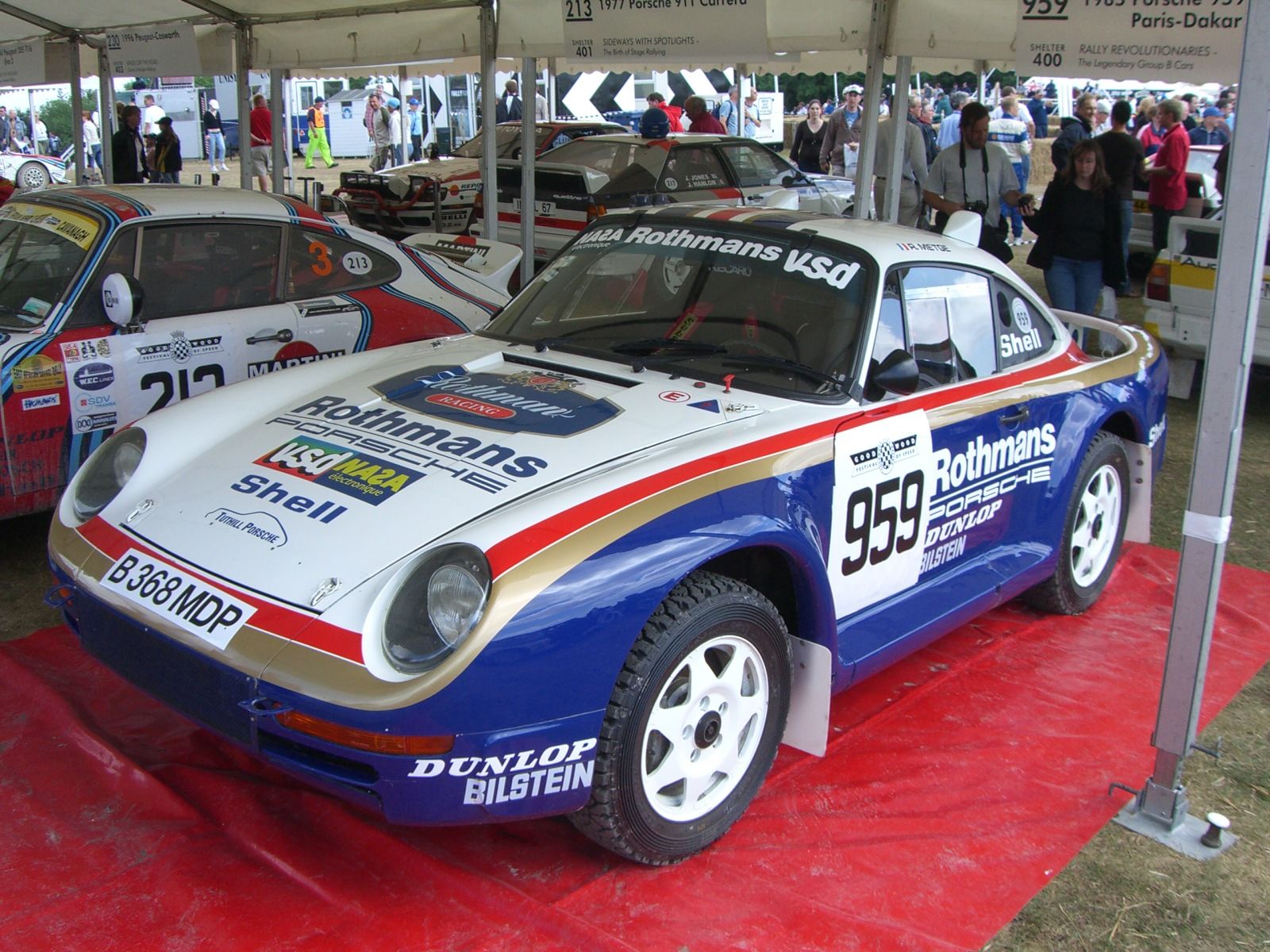
8. **Porsche 959**The 1980s heralded a new era of automotive excitement, particularly with the surging popularity of turbo vehicles among mainstream drivers. Stepping boldly into this landscape, the Porsche 959 emerged as an undeniable titan, an answer to the era’s hunger for blistering speed and cutting-edge technology. Introduced in 1986, this marvel of German engineering boasted a breathtaking top speed of 197 miles per hour, securing its place, if only for a time, as “the fastest street-legal car in the world.”
At its debut, the Porsche 959 garnered immense praise as one of the most advanced sports cars ever conceived. Its pioneering spirit was evident in its engineering, standing out as one of the first high-performance vehicles to come equipped with all-wheel drive. This revolutionary feature not only enhanced its handling dynamics but also redefined expectations for what a supercar could achieve on various terrains.
Beyond its raw performance, the 959 also cultivated an aura of exclusivity, becoming a prized possession for discerning car collectors among the rich and famous, including the likes of Jerry Seinfeld and Bill Gates. In a fascinating turn of events, a 959 owned by Bill Gates, which faced a prolonged storage by the Customs Service at the Port of San Francisco, famously prompted him to help pass the “Show and Display law.” This legislation significantly changed federal importation rules for cars of “unusually high significance,” underscoring the 959’s profound impact beyond mere motoring.
Today, the Porsche 959 remains etched in automotive lore, widely regarded as “one of the best cars of all time.” Its fusion of uncompromising performance, technological foresight, and undeniable mystique makes it a perpetual dream for reintroduction, a benchmark against which modern supercars are still often measured.
Read more about: Buyer Beware: Navigating the Complexities of Convertible Tops – 12 Critical Issues That Could Ruin Your Summer Drive
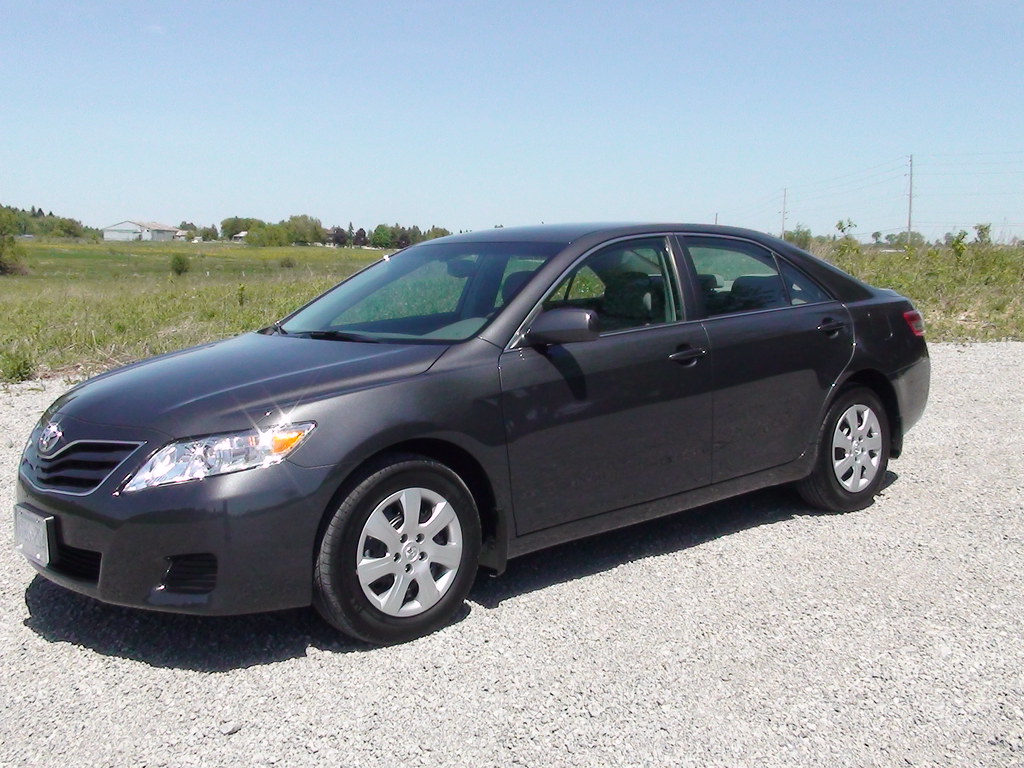
9. **Toyota Camry**As the automotive world transitioned into the 1990s, consumer preferences began to shift, with car shoppers increasingly prioritizing highly dependable and popular vehicle models suited for daily commuting. While Honda Accords and Civics certainly found their footing as best sellers during this decade, it was the Toyota Camry that truly launched its continued domination of the American car market in this pivotal era. It quickly became the go-to choice for those seeking unwavering reliability.
The Camry’s legacy is built on its extraordinary durability and impressively long service life. It’s not uncommon to still see Toyota Camrys from the 1980s and 1990s gracefully navigating roads today, a testament to their legendary construction and enduring demand. This remarkable longevity has allowed the Camry to retain its value remarkably well over the decades, making it a smart and reliable investment for countless drivers.
While the Camry proudly originated in Japan, its commitment to the American market runs deep. In a significant recognition of its local impact, the Toyota Camry was named “the most American made car in the United States in 2015,” with more than 75 percent of its parts and manufacturing rooted in America. Interestingly, in Eastern and Southeast Asian markets, the Camry transcends its practical sedan image, often perceived as a luxury vehicle.
Holding the title of “the best selling car model in the U.S. today” and having been “the best selling passenger vehicle for many years in America,” the Camry’s continuous evolution and steadfast commitment to reliability make it an icon in its own right. A new iteration that masterfully blends its legendary dependability with cutting-edge modern technologies would undoubtedly resonate with a new generation of drivers.
Car Model Information: 2024 Toyota Camry LE
Name: Toyota Camry
Caption: 2018 Toyota Camry Ascent (ASV70, Australia)
Manufacturer: Toyota
Production: March 1982 – present
Aka: ubl
Class: ubl
Layout: ubl
Predecessor: ubl
Successor: Toyota Avensis (T250)
Categories: 1990s cars, 2000s cars, 2010s cars, 2020s cars, All-wheel-drive vehicles
Summary: The Toyota Camry is an automobile sold internationally by the Japanese auto manufacturer Toyota since 1982, spanning multiple generations. Originally compact in size (narrow-body), the Camry has grown since the 1990s to fit the mid-size classification (wide-body)—although the two widths co-existed in that decade. Since the release of the wide-bodied versions, Camry has been extolled by Toyota as the firm’s second “world car” after the Corolla. As of 2022, the Camry is positioned above the Corolla and below the Avalon or Crown in several markets. In Japan, the Camry was once exclusive to Toyota Corolla Store retail dealerships. Narrow-body cars also spawned a rebadged sibling in Japan, the Toyota Vista—also introduced in 1982 and sold at Toyota Vista Store locations. Diesel fuel versions have previously retailed at Toyota Diesel Store. The Vista Ardeo was a wagon version of the Vista V50.
Get more information about: Toyota Camry
Buying a high-performing used car >>>
Brand: Toyota Model: Camry
Price: $25,490 Mileage: 14,437 mi.
Read more about: Built to Last: 10 Legendary Vehicles That Rarely Need a Major Engine Overhaul
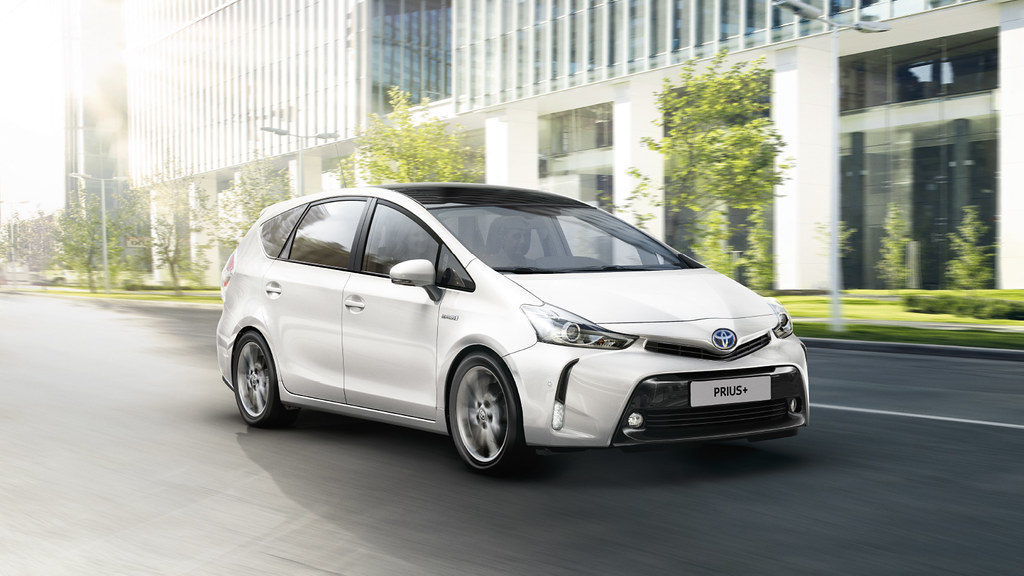
10. **Toyota Prius**The dawn of the 2000s brought with it a palpable shift in automotive priorities, largely driven by rapidly increasing gas prices and a heightened focus on environmental concerns. Into this crucial moment, American consumers wholeheartedly embraced the Toyota Prius as an innovative and much-needed alternative to the conventional sedan. Its adoption became particularly pronounced after Hurricane Katrina dramatically escalated gas prices in 2004, solidifying its role as a practical, eco-conscious choice.
Introduced worldwide in 2000, the Prius quickly became a global phenomenon, reaching an astounding three million sales by 2013. This impressive milestone underscored its widespread acceptance and the growing demand for hybrid technology. The second generation Prius, unveiled in 2003, proved especially popular, often becoming “tough to find for sale due to the high demand,” a clear indicator of its undeniable market appeal and groundbreaking nature.
Today, the Prius stands proudly as “the world’s top selling hybrid vehicle,” a title it has earned through consistent innovation and unwavering dedication to fuel efficiency. Now in its fourth generation, each iteration has seen impressive improvements, enhancing its “fuel economy on average by about 10 percent.” This continuous evolution ensures its enduring relevance and appeal in an ever-more environmentally conscious world.
The Prius’s journey from a niche offering to a mainstream success story is a powerful narrative of foresight and adaptability. Its continuous reinvention, pushing the boundaries of what a fuel-efficient and environmentally friendly car can be, makes its ongoing presence on our roads a continuous reintroduction of automotive innovation, perfectly aligned with the spirit of modern greatness.
Car Model Information: 2021 Toyota Prius XLE
Name: Toyota Prius
Caption: Fifth generation Prius (XW60)
Manufacturer: Toyota
Production: December 1997 – present
ModelYears: 2001–present (US)
Class: ubl
BodyStyle: unbulleted list
Layout: unbulleted list
Sp: uk
Categories: 2000s cars, 2010s cars, 2020s cars, All-wheel-drive vehicles, All Wikipedia articles in need of updating
Summary: The Toyota Prius ( PREE-əss) is a car produced by Toyota since 1997 over five generations. The Prius has a hybrid drivetrain, which combines an internal combustion engine and an electric motor. Initially offered as a subcompact four-door saloon, it has been produced only as a compact five-door liftback since 2003. The Prius was developed by Toyota to be the “car for the 21st century”; it was the first mass-produced hybrid vehicle, first going on sale in Japan in 1997 at all four Toyota Japan dealership chains, and subsequently introduced worldwide in 2000. In 2011, Toyota expanded the Prius family to include the Prius v, an MPV, and the Prius c, a subcompact hatchback. The production version of the Prius plug-in hybrid was released in 2012. The second generation of the plug-in variant, the Prius Prime, was released in the U.S. in November 2016. The Prius family totaled global cumulative sales of 6.1 million units in January 2017, representing 61% of the 10 million hybrids sold worldwide by Toyota since 1997. Toyota sells the Prius in over 90 markets, with Japan and the United States being its largest markets.
Get more information about: Toyota Prius
Buying a high-performing used car >>>
Brand: Toyota Model: Prius
Price: $21,790 Mileage: 55,905 mi.
Read more about: Hybrid Car Battery Woes: An In-Depth Guide for Savvy Owners to Avoid Thousands in Repairs
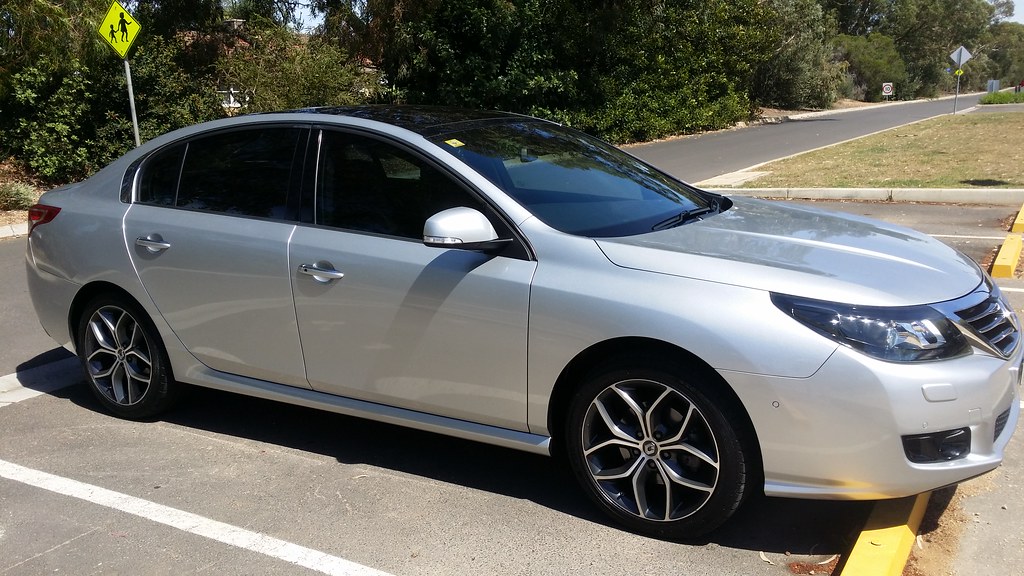
11. **Renault 5**As we look to the future, some iconic names are not just whispered wishes but confirmed realities, poised for a thrilling reintroduction. Among them, the Renault 5 is making a highly anticipated comeback, ready to captivate a new generation as a stylish electric car. First revealed as a concept in 2021, this reimagined vehicle beautifully pays homage to its 1970s predecessor, a model affectionately remembered and adored by rally enthusiasts for its spirited performance and distinctive character.
The upcoming Renault 5 E-Tech, slated to arrive in early 2025, is a masterclass in blending nostalgic aesthetics with cutting-edge electric technology. It impressively “retains much of the retro charm” that made the original so beloved, while simultaneously embracing the advancements of modern EV powertrains. With a competitive range of “250 miles” and an attractive starting price of “around £25,000,” it’s set to carve out a unique niche in the burgeoning electric vehicle market.
This revival represents more than just a new car; it’s a “blend of nostalgia and innovation” that promises to deliver a delightful driving experience rooted in a rich heritage. The excitement doesn’t stop there, as Renault has also announced plans to “bring back the Renault 4,” another cherished classic, also as an electric model, echoing the beloved style of its 1960s predecessor. These reintroductions are a testament to the enduring power of iconic design meeting future-forward technology.
Read more about: Built to Last: 10 Legendary Vehicles That Rarely Need a Major Engine Overhaul
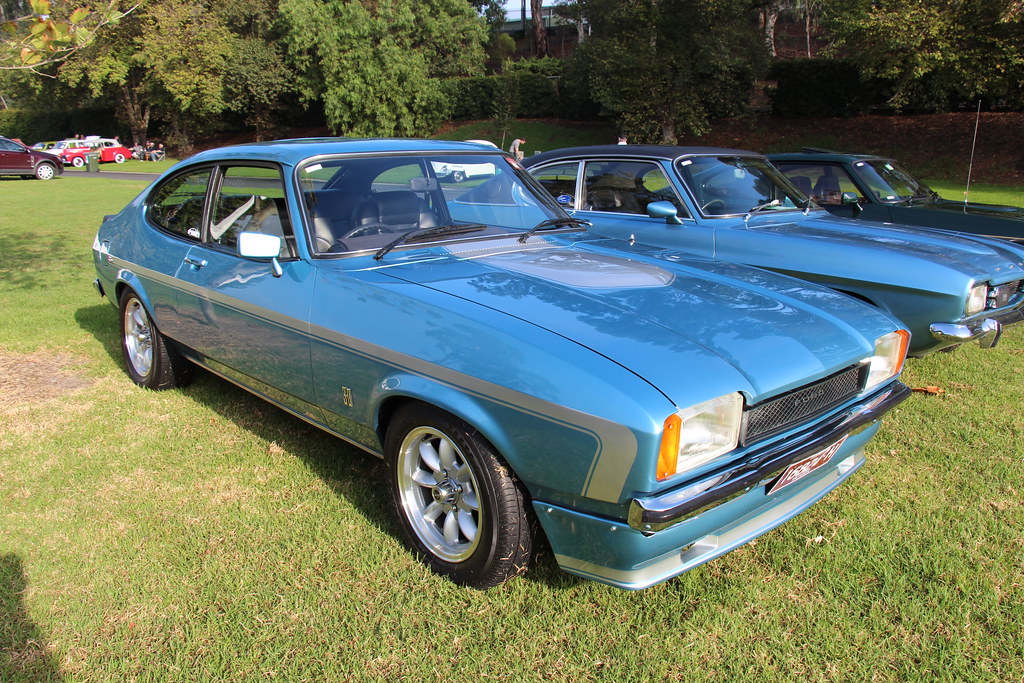
12. **Ford Capri**The news of the Ford Capri’s revival has undeniably “stirred significant debate,” igniting passionate conversations across the automotive community. Historically celebrated as a “sleek, two-door coupe produced between 1969 and 1986,” the original Capri was a European icon that epitomized style and accessible performance. Its elegant lines and dynamic presence left an indelible mark on enthusiasts who cherished its classic sports car appeal.
However, Ford’s decision to now have the Capri name “grace a 2.1-tonne electric SUV priced at £42,075” has sparked considerable controversy. This dramatic transformation from a lithe coupe to a substantial electric SUV has “angered some fans of the original,” evoking a strong sense of nostalgia-tinged disappointment. The backlash draws parallels to the divided reactions Ford encountered in 2019 when it applied the legendary Mustang name to its electric crossover, the Mustang Mach-E.
In defense of this bold new direction, Ford asserts that the new Capri “continues the story of the iconic original,” aiming to inject “soul” into the rapidly expanding electric vehicle market. This strategy highlights the complex challenges automakers face when attempting to resurrect beloved nameplates in an era defined by electrification and evolving vehicle segments. It’s a delicate balance between honoring a storied past and adapting for a sustainable future.
The discussion surrounding the new Capri encapsulates the hopes and challenges inherent in bringing back automotive greatness. It forces us to confront whether a name’s legacy can be successfully translated across vastly different platforms and powertrains, or if such radical reinventions risk alienating a loyal fanbase in pursuit of new market relevance. The journey of the new Capri will certainly be one to watch.
Car Model Information: 2021 Ford Mustang GT
Caption: 1978 Ford Capri Mk3 2.0L
Name: Ford Capri
Manufacturer: Ford of Europe
Production: November 1968 – December 1986
Designer: Philip T. Clark
Class: coupé
Related: Ford Cortina,Ford Taunus TC
Successor: Ford Probe,Ford Puma (sport compact)
Categories: 1960s cars, 1970s cars, 1980s cars, All Wikipedia articles written in British English, All articles with incomplete citations
Summary: The Ford Capri is a fastback coupé built by Ford of Europe and designed by Philip T. Clark, who had been involved in the design of the Ford Mustang. It used the mechanical components from the Mk2 Ford Cortina and was intended as the European equivalent of the Ford Mustang. The Capri went on to be highly successful for Ford, selling nearly 1.9 million units in its lifetime. A wide variety of engines were used in the car throughout its production lifespan, which included V6 engines named Essex and Cologne at the top of the range, while the straight-four (Kent) and V4 (Taunus) engines were used in lower-specification models. Although the Capri was not officially replaced, the second-generation Probe was effectively its replacement after the later car’s introduction to the European market in 1994.
Get more information about: Ford Capri
Buying a high-performing used car >>>
Brand: Ford Model: Capri
Price: $35,993 Mileage: 18,085 mi.
Read more about: Mastering the Inbox: Your HBR Guide to Writing Executive Emails That Command Instant Attention and Action
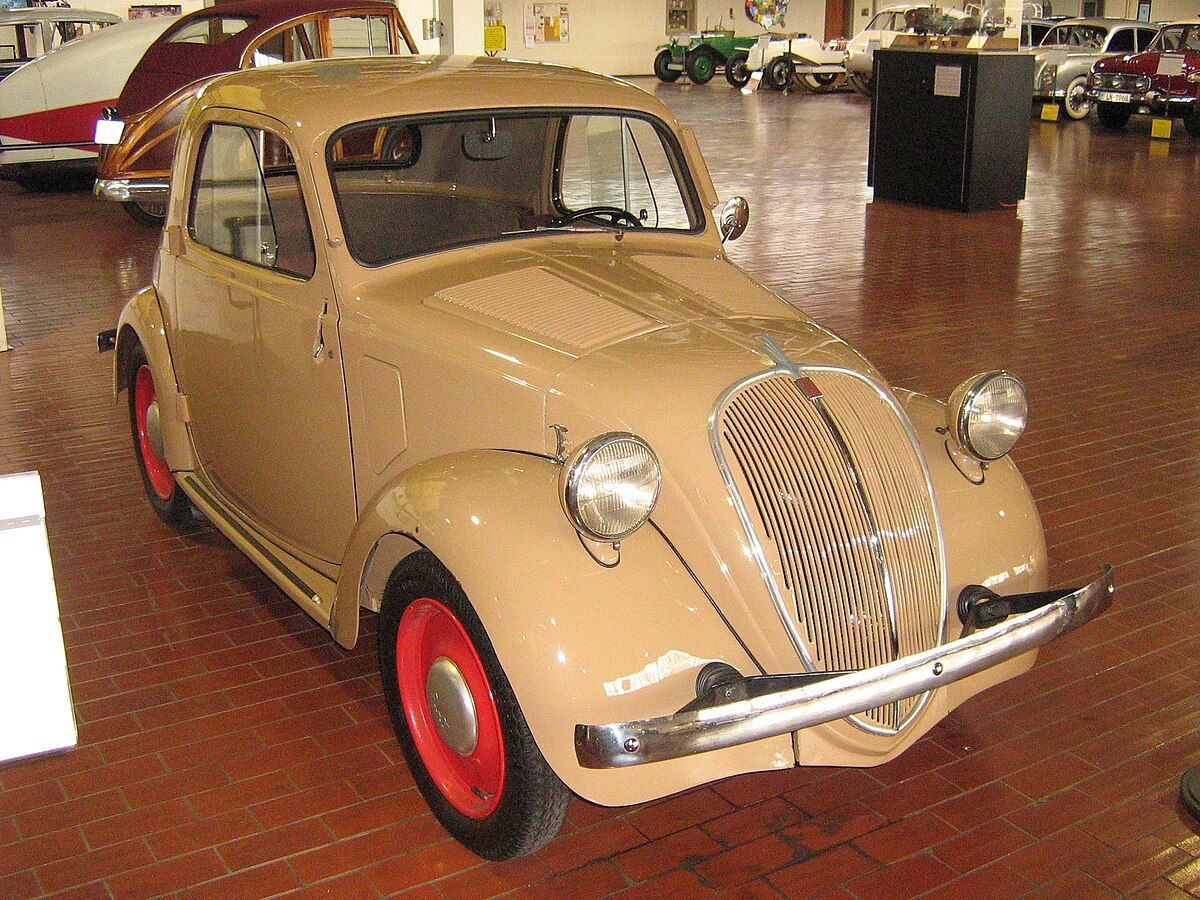
13. **Fiat Topolino**Fiat is also embracing the ‘revival revolution’ with the charming reintroduction of the Topolino, a name last seen on the roads of Italy in the 1950s. The original Topolino was a diminutive yet beloved small car that famously preceded the iconic Fiat 500, setting the stage for compact, accessible urban motoring. Its return marks a delightful nod to Fiat’s rich heritage of creating cheerful, practical vehicles.
The new Topolino emerges as a compact two-door electric vehicle, thoughtfully “sharing its platform with the Citroën Ami,” a testament to its focus on efficient urban mobility. What truly sets this modern interpretation apart is its unwavering commitment to “retro styling.” With captivating “oval headlights, classic wheel trims, and a suitcase rack at the rear,” every design element is a playful and intentional “nodding to its heritage,” ensuring it radiates an undeniable vintage charm.
Designed with city life in mind, the Topolino offers two versions in the UK, including the uniquely appealing “open-top Dolce Vita,” which features a sunroof and, quite notably, no doors – an embodiment of carefree motoring. With an accessible starting price of “around £8,000,” a practical range of “47 miles,” and a top speed of “28 mph,” it presents itself as a charming yet exceptionally “practical choice for urban travel,” perfect for navigating bustling streets with a smile.
This electric reinterpretation perfectly captures the essence of the original Topolino, reimagining its spirit of compact, accessible personal transport for the electric age. It’s a wonderful example of how heritage can be celebrated and reinvented to meet contemporary needs, proving that great things truly do come in small, eco-friendly packages.
Read more about: Critical Stellantis Recall: Comprehensive Breakdown of 72,000 UK Vehicles Facing Engine Fire Risk
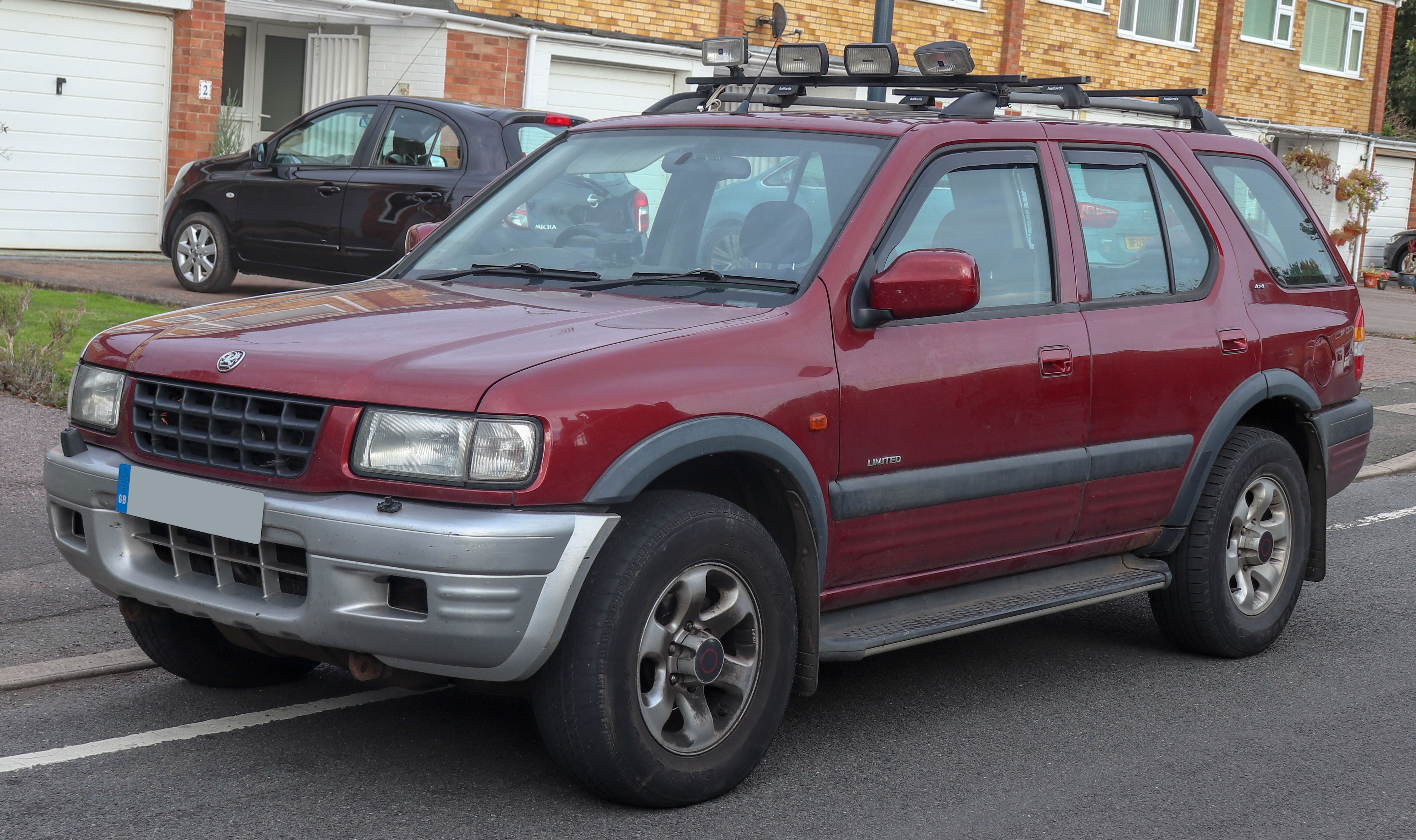
14. **Vauxhall Frontera**Another familiar nameplate re-emerging from the archives is the Vauxhall Frontera, making its comeback after a 20-year hiatus. The original Frontera, a “boxy 4×4 sold from 1991 to 2004,” carved out a reputation as a robust and capable off-roader, a staple for those seeking adventure and utilitarian prowess. Its return signals a significant evolution for the venerable name.
The new Frontera is set to re-enter the market as a contemporary compact SUV, offering a choice of “both petrol and electric powertrains,” reflecting the diverse demands of today’s drivers. This versatile new model is positioned to “replace the Crossland” in Vauxhall’s lineup, ready to compete fiercely with established rivals such as the Ford Puma and Nissan Juke in the highly competitive compact SUV segment.
A key highlight of the reimagined Frontera is its profound emphasis on passenger comfort, particularly evident in its innovative seating. It proudly features “a patented seat design aimed at reducing back pain on long journeys,” a thoughtful touch that promises to enhance the overall driving experience, making extended trips more enjoyable and less fatiguing for occupants.
Interestingly, and in a notable departure from its predecessor’s rugged capabilities, this new version “will not be capable of off-road driving,” as it directs power “only to the front wheels.” This evolution underscores a strategic shift, transforming the Frontera from a go-anywhere 4×4 into a more urban and family-focused compact SUV, showcasing how beloved names can adapt to new market realities and consumer expectations.
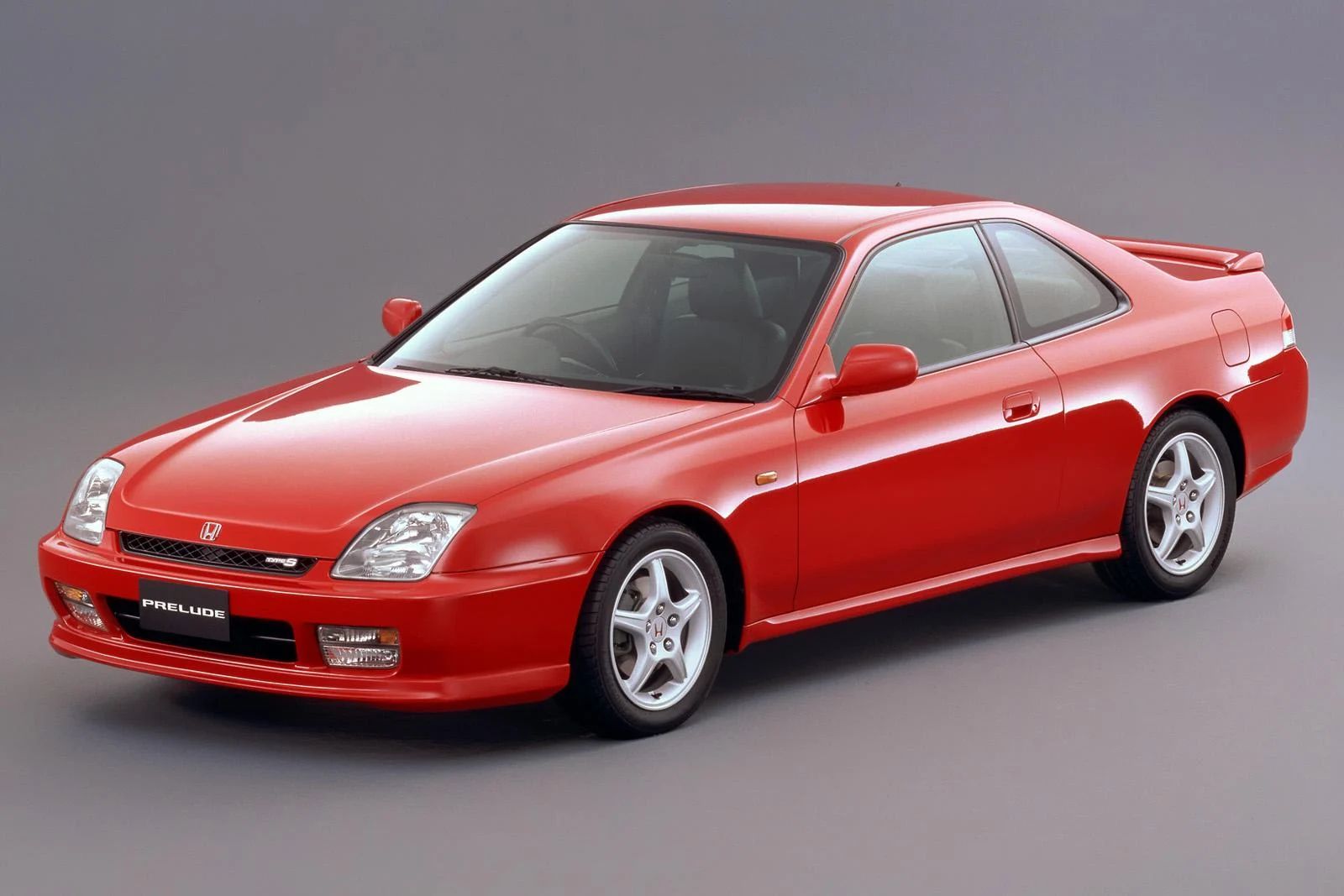
15. **Honda Prelude**Excitement is building for the return of the Honda Prelude, a name that resonates deeply with enthusiasts of sleek, performance-oriented coupes. Last produced in 2001, the Prelude, known for its “sleek design and front-wheel-drive performance,” enjoyed a distinguished run that began in 1979, establishing itself as a standout in a competitive market segment with its unique blend of style and driving dynamics.
The highly anticipated upcoming model, slated for a 2025 release, promises to “carry on the coupe tradition” while enthusiastically embracing the future. It will feature a “performance-focused hybrid powertrain,” which is “likely borrowed from the Honda Civic,” indicating a blend of proven efficiency and exhilarating performance. This strategic choice ensures the new Prelude will deliver a compelling driving experience in a more environmentally conscious era.
In a market increasingly dominated by SUVs and electric crossovers, the new Honda Prelude is set to make a distinctive statement. It will proudly “stand out in the UK market as one of the few remaining front-wheel-drive coupes,” a niche that has seen many models, like the Audi TT, regrettably discontinued. This positioning allows the Prelude to fill a significant void for drivers who appreciate the classic coupe silhouette and engaging FWD dynamics.
The return of the Prelude represents a thoughtful revival, demonstrating Honda’s commitment to its sporting heritage while adapting to modern technological demands. It’s a testament to the enduring appeal of the two-door coupe and an exciting prospect for enthusiasts eagerly awaiting a fresh take on a beloved classic, ensuring its legacy continues to inspire speed and style for years to come.
Car Model Information: 2001 Honda Prelude Base 2dr Coupe
Name: Honda Prelude
Caption: 1998 Honda Prelude VTi (BB6) in the UK
Manufacturer: Honda
Production: November 1978 – October 2001,2025–present
Class: Sport compact car
Layout: Front-engine, front-wheel-drive
BodyStyle: liftback,coupe
Assembly: Sayama, Saitama
Predecessor: Honda 1300#Honda 145
Categories: 1980s cars, 1990s cars, 2020s cars, All articles lacking reliable references, All articles needing additional references
Summary: The Honda Prelude is a sport compact car produced by the Japanese company Honda. It was produced over five generations from 1978 to 2001, and reintroduced in 2025. For the first five generations, as a two-door coupe loosely derived from the Accord, the Prelude was the first Honda to feature a moonroof, a feature that remained standard equipment throughout its production. The Prelude was used by Honda to introduce the Japanese Honda retail sales chain Honda Verno, with the international release of the model following shortly after. The Prelude’s manufacture concluded in 2001 on introduction of the fourth-generation Integra. The Prelude name was originally trademarked by Toyota, but was amicably given to Honda for use. The Prelude’s nameplate aligned with a series of music-themed nameplates in use by Honda, including the Accord, Quintet, Concerto, Jazz, and Ballade.
Get more information about: Honda Prelude
Buying a high-performing used car >>>
Brand: Honda Model: Prelude
Price: $18,975 Mileage: 38,734 mi.
Read more about: Gear Up for Goodbye: 7 Beloved Models Waving Farewell to Manual Transmissions in 2025
From the pioneering spirit of the Model T to the high-tech wizardry of today’s electric revivals, the automotive world continuously reinvents itself, often drawing strength and inspiration from its storied past. Each vehicle we’ve celebrated embodies a unique chapter in motoring history, a blend of engineering prowess, design flair, and a distinct personality that makes it utterly unforgettable. The desire to see these legends reimagined, to experience their essence through modern lenses, speaks to a universal truth: our love affair with the automobile is as timeless as the machines themselves. As manufacturers navigate the delicate balance between honoring heritage and forging future paths, one thing remains clear: the roar of anticipation for these iconic returns will always be a powerful symphony for enthusiasts worldwide. Here’s to hoping these dreams become asphalt realities, igniting new generations with the same passion that defined their predecessors!

